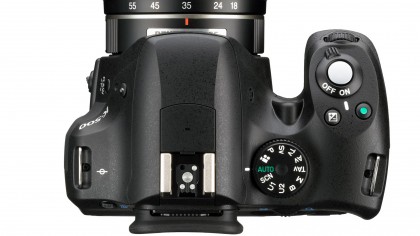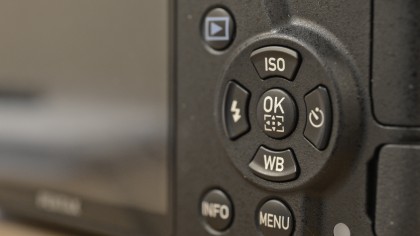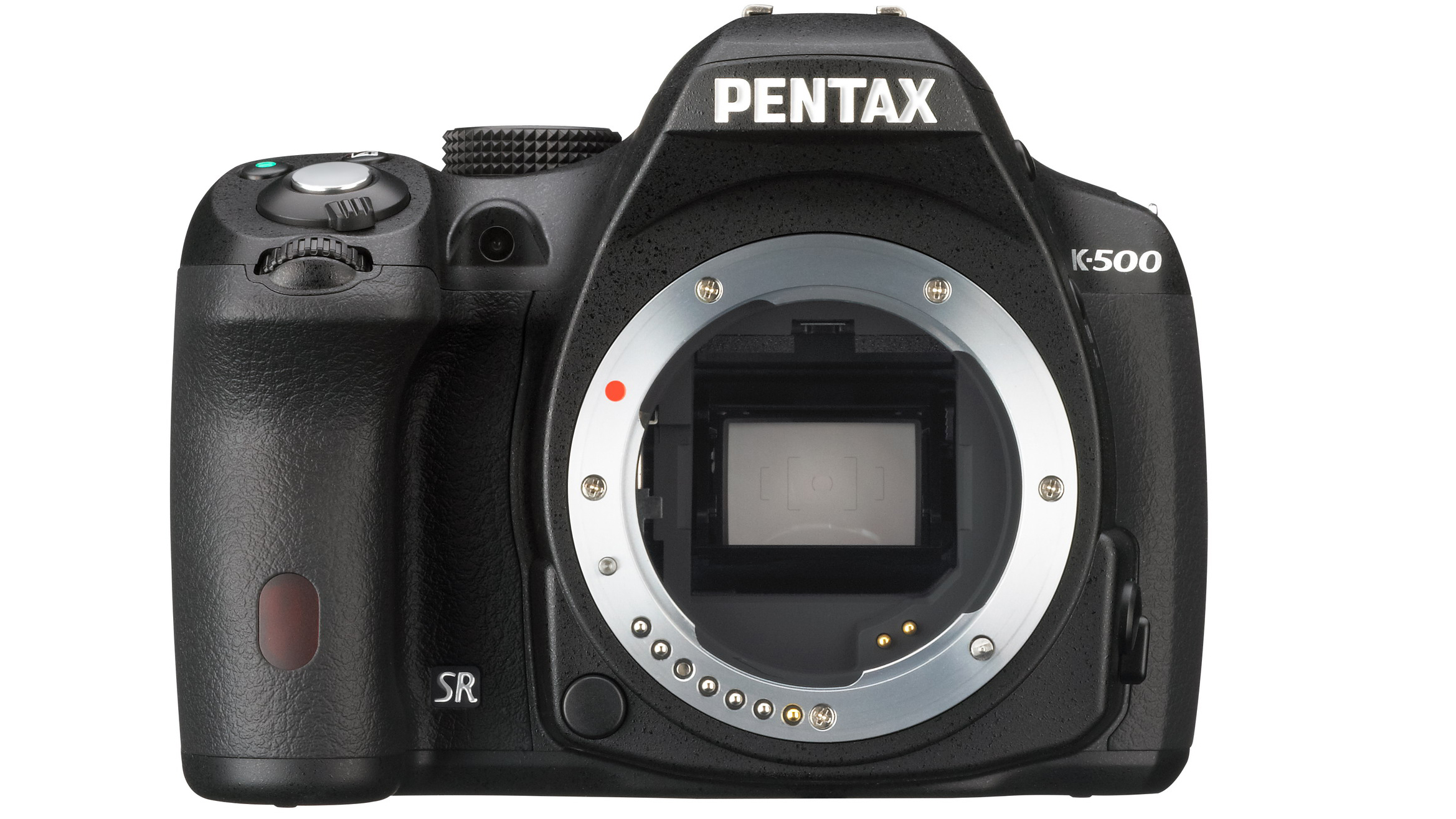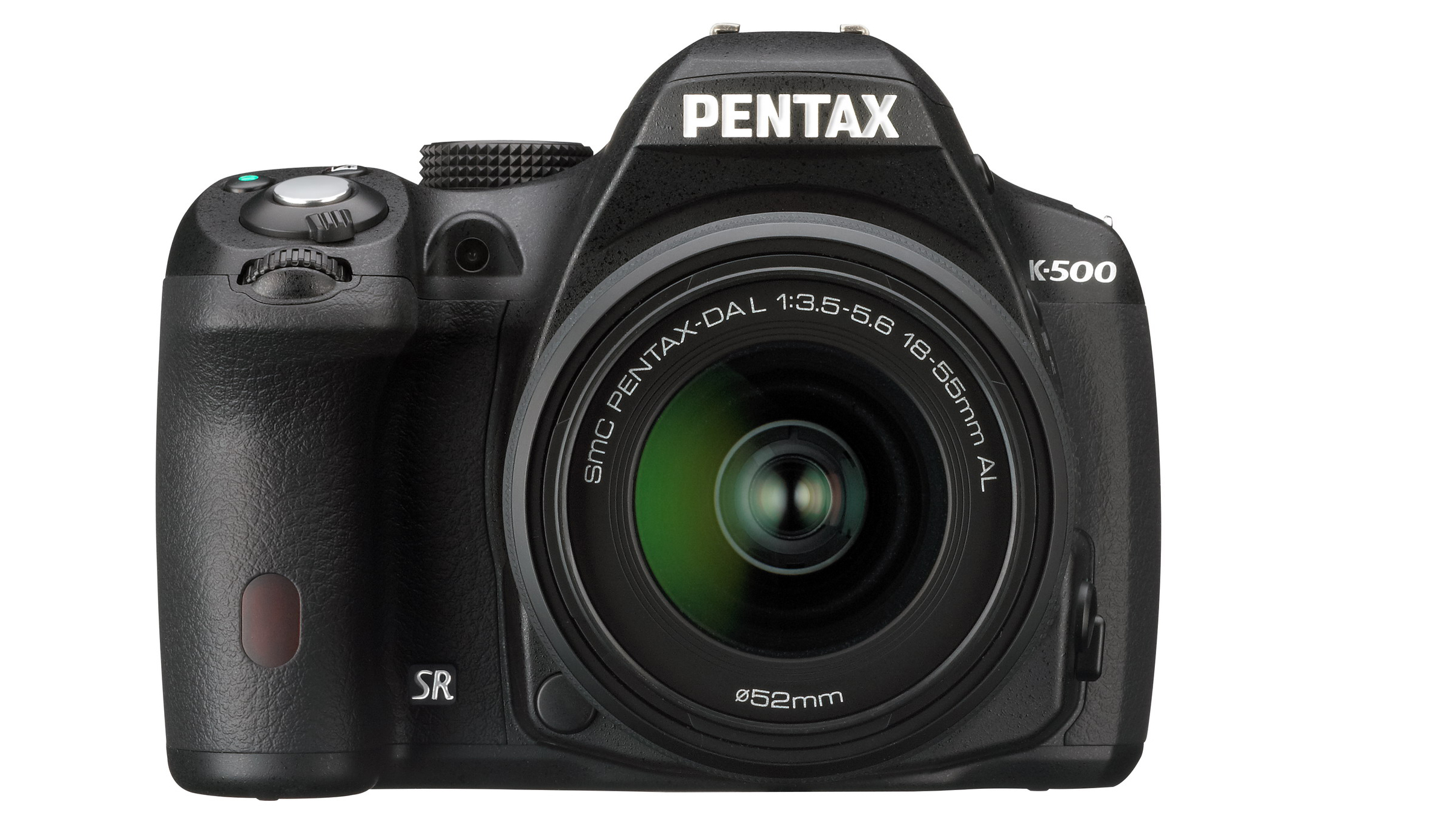Why you can trust TechRadar
The rise of the compact system camera has made it a tough time in recent years for the entry-level DSLR, which may explain why Pentax hasn't rushed to replace its ageing K-r junior model. But, better late than never, the K-500 steps in to fill the vacant bread-and-butter end of the company's DSLR range.
In essence the K-500 is the same camera as the new mid-range K-50 that Pentax recently introduced to replace the K-30. The key differences between the new siblings are that the K-500 has to do without weather sealing, and its autofocus system lacks any AF point display in the viewfinder.
But given Pentax's history of producing well made beginner DSLRs with good specs, can the K-500 prove a worthy alternative to the Canon 100D, Nikon D3200 and Sony A58?

Features
First impressions aren't encouraging, however, suggesting Pentax is already playing catch-up with its established rivals.
At the heart of the K-500 is the same 16.3-megapixel APS-C CMOS sensor found in the old K-30. This kind of pixel count sounds a bit paltry by today's standards, especially compared with Nikon's 24MP chip in the D3200.
The sensor does, however, come equipped with Pentax's Shake Reduction system, enabling it to shift enough to allow shutter speeds up to three stops slower while retaining sharp shots. Having such a system in the camera body rather than the lens carries the added bonus that you can attach almost any K-mount compatible lens and still maintain a stabilised image.
When Shake Reduction isn't enough and there's no alternative but to crank up the sensor sensitivity, the K-500's PRIME M processing engine should be up to the job.

It's another element borrowed from the K-30, but Pentax has given it a few tweaks in an effort to improve image quality and low-light performance. Consequently the K-500 can boast a maximum sensitivity of ISO 51200; a stop higher than Canon's 100D and comfortably more than Nikon or Sony's equivalent offerings.
The boosted processing also helps the K-500 reach a respectable 6fps burst shooting rate at full resolution for superior performance when capturing fast sports. If even this shooting speed won't cut it, you can always switch to video recording at Full HD resolution at a choice of 30, 25 or 24 frames per second.
To ensure all this processing speed isn't held up by sluggish autofocusing, Pentax has employed its SAFOX IXi+ autofocus module, again shared with the K30 and K50. It features 11 selectable autofocus points, of which an impressive nine are the more sensitive cross type.
See it all
Although the viewfinder doesn't display any of these autofocus points, its glass pentaprism's 100% field of view will show elements on frame fringes that similar cameras often hide, meaning you won't have to waste time cropping out unwanted extras.
The K-500 includes the usual array of scene modes as well as 19 effects filters, making the transition from an advanced compact or bridge camera a little easier.
You also get a useful HDR function whereby the camera captures three images at varying customisable exposures and automatically tone maps them into a single image with increased highlight and shadow detail.

Another nice touch is the battery compartment. This will house either the included 410-shot capacity rechargeable Lithium-ion cell, or alternatively you can slot in 4 standard AA batteries with the aid of an optional holder. It's a great feature if you're travelling without regular mains access.
What is a hands on review?
Hands on reviews' are a journalist's first impressions of a piece of kit based on spending some time with it. It may be just a few moments, or a few hours. The important thing is we have been able to play with it ourselves and can give you some sense of what it's like to use, even if it's only an embryonic view. For more information, see TechRadar's Reviews Guarantee.
